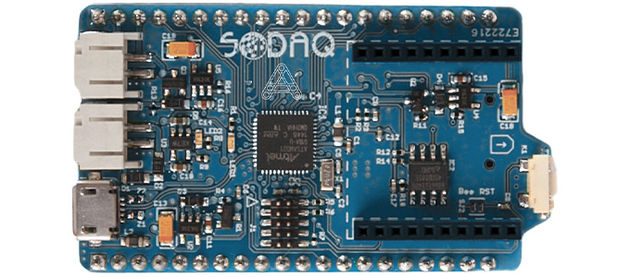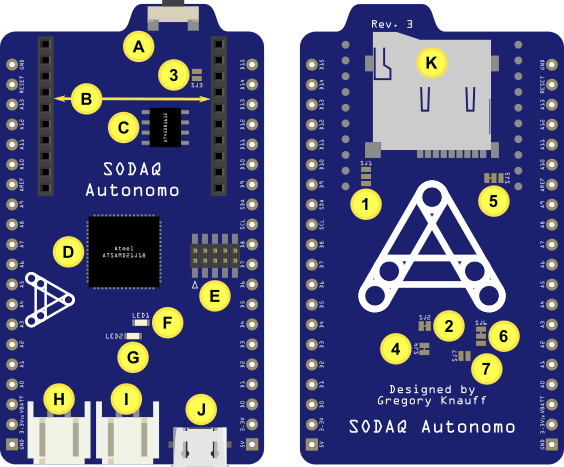Autonomo¶

Overview¶
We built a next generation, Arduino-compatible board that can record data and trigger actions in any environment. We believe you can save yourself a lot of time by being notified of important information. The information you want and need should come to you, magically. Having to go to your favorite surf spot to see how strong the wind is, or physically measuring how much water there still is in the well nearby your village, is a thing of the past.
The Autonomo is a matchbox-sized powerhouse which uses the new Atmel Cortex M0+ 32bit microcontroller. We designed it to be autonomous (self-sufficient) by enabling it to be powered by a smartphone-sized solar panel. It will allow you to create devices that will notify you of anything. The new M0+ processor packs computing power which is comparable to the first Mac. It will make you wonder why you ever used anything else! Our goal was to create a device which would be able to run indefinitely using solar generated power. Leveraging our years of experience in creating low-powered devices, the Autonomo has been designed to run efficiently and with extremely low power consumption.
Intended use The ExpLoRer is a development/evaluation tool intended for the evaluation of Microchip wireless modules in a Research and Development laboratory environment. It is not a Finished Appliance. Manufacturers who integrate ExpLoRer in a Finished Appliance product must take responsibility to follow regulatory guidelines, for example for CE marking.
Getting Started¶
Follow the getting started guide to verify you use the correct URL and update your boardfiles to the latest version.
Features¶
| Specifications | |
|---|---|
| Microcontroller | ATSAMD21J18, 32-Bit ARM Cortex M0+ |
| Compatibility | Arduino M0 compatible |
| Size | 58.5 x 33.5 mm |
| Operating Voltage | 3.3V |
| Digital I/O Pins | 16, with 12 PWM, UART, SPI and TWI (I2C) |
| Analog Input Pins | 6, 12-bit ADC channels |
| Analog Output Pins | 10-bit DAC |
| External Interrupts | Available on all pins except pin 4 |
| DC Current per I/O pin | 7 mA |
| Flash Memory | 256 KB |
| SRAM | 32 KB |
| EEPROM | Up to 16KB by emulation |
| Clock Speed | 48 MHz |
| Debug | Serial Wire Interface |
| Communications | Bee compatible slot for communication modules with software switchable power |
| Storage | 16Mbit Dataflash Module and Micro SD card holder |
| Power | 5V USB power and/or 3.7V LiPo battery |
| Power switch | Software switchable power for connected devices up to 1A |
| Charging | Solar charge controller, up to 500mA charge current |
| LED's | Yellow charge LED and green LED on pin 13 |
| A | Reset button |
| B | Bee socket |
| C | AT45DB161E 16mbit flash memory |
| D | Atmel SAMD21J18 |
| E | Serial Wire Debug socket |
| F | Onboard LED (LED1) |
| G | LiPo charge indicator LED (LED2) |
| H | LiPo battery socket |
| I | Solar panel socket |
| J | Micro-USB B socket |
| K | MicroSD card socket |
| 1 | SJ1 jumper: Can be used to connect the RI_AS pin to either the RI or ASSOC pin of the Bee socket |
| 2 | SJ2 jumper: Can be used to disconnect LED1 |
| 3 | SJ3 jumper: Can be used to connect the Bee socket DIO3 pin to the board reset |
| 4 | SJ4 jumper: Can be used to disconnect LED2 (charge indicator) |
| 5 | SJ5 jumper: Can be used to change the Bee socket VCC from switched to always on |
| 6 | SJ6 jumper: Can be used to change the 3.3V SW source from switched to always on |
| 7 | SJ7 jumper: Can be used to connect LiPo charging status to the A1 pin |
